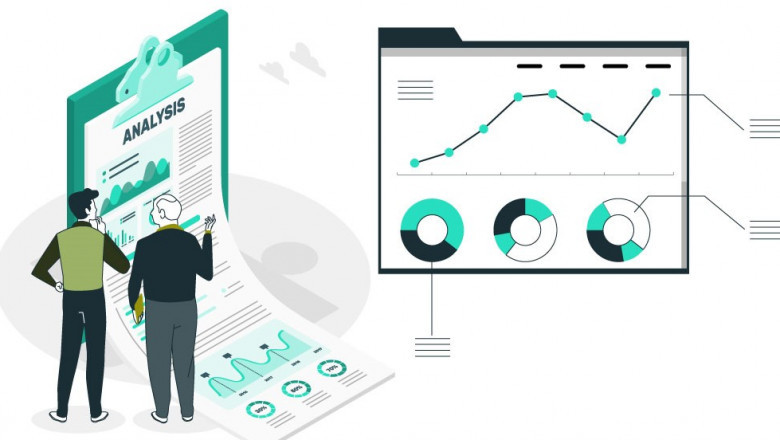views
Introduction
BPA, or business process analysis, is a methodical way of investigating and enhancing business processes. It enables companies to recognize inefficiencies, grasp how their processes run, and apply changes to improve performance. BPA guarantees that resources are used wisely and objectives are met faster by examining every step in a process. BPA is used widely across various sectors today. It promotes improved decision-making, cost savings, and higher customer satisfaction. Aspiring Business Analysts can join the Business Analyst Course in Delhi with Placement for the best skill development opportunities. It is essential for driving operational excellence and ensuring that processes match corporate goals. This article explores BPA in detail while exploring the various processes involved. Read this section to know more.
All About Business Process Analysis
Business Process Analysis (BPA) is a strategy for examining, understanding, and optimizing several activities involved in an organization's workflow. The main objective is to find redundancies, bottlenecks, and inefficiencies in current corporate processes and suggest changes to improve performance and output.
BPA is the study of how every smaller component of a complex system advances the general goal by reducing that system to smaller parts. Analysts graphically represent workflows using tools like flowcharts, process maps, and software such BPMN (Business Process Model and Notation). This examination reveals gaps, delays, or pointless procedures that frequently impede efficiency.
The procedure consists of several important phases:
Ø Identify the Process: Select a particular business procedure to evaluate.
Ø Gather Information: Gather information via observations, papers, or interviews.
Ø Model the Process: Make a graphics depiction of the present procedure.
Ø Analyse the Process: Look over the workflow for mistakes or inefficiencies.
Ø Design Improvements: Suggest updates to streamline the process.
Ø Implement & Monitor: Implement the modifications and keep track of their impact.
Today, BPA is widely used in sectors including manufacturing, finance, healthcare, and IT. In a customer care department, for example, BPA could show that manual data input slows down reaction times; therefore, automating is recommended.
Increased efficiency, cost savings, better resource use, and higher customer satisfaction are among the advantages of BPA. It also helps to ensure that procedures adhere to rules, therefore boosting compliance.
Thus, Business Process Analysis is a tool for companies aiming for continuous improvement. Businesses can stay competitive and responsive to market demands by means of process analysis and optimization.
Procedures Involved in Business Process Analysis
Business Process Analysis (BPA) is a systematic application of techniques to find, analyse, and enhance corporate processes. These processes assist companies in improving service delivery, cutting expenses, and boosting efficiency.
Below are the main stages involved in BPA. Refer to the Business Analyst Online Training in India for complete guidance.
1. Define Objectives
The initial stage is identifying the purpose of the analysis. Whether it be in customer service, reducing delays, or cost-cutting, having clear objectives allows one to concentrate on the analysis.
2. Select the Process
Select a particular procedure that matches your goals. It might be a fundamental corporate activity such as payroll, order processing, or inventory control.
3. Gather Data
Gather necessary information through process documentation review, observations, surveys, and interviews. This will help you to better understand how the system operates.
4. Map the Current Process (As-Is)
Use flowcharts or BPMN diagrams to construct a visual representation of the present process. Every step, decision point, and participant engaged is shown in this “As-Is” model.
5. Analyse the Process
Look over the mapped process for redundancies, inefficiencies, delays, and bottlenecks. Evaluate performance measures and search for actions that either produce mistakes or add no value.
6. Identify Improvement Opportunities
Determine the areas where improvements might increase process efficiency from the analysis. This may involve automation, steps eliminated, or task reassignment.
7. Design the Future Process (To-Be)
Design a new process model with the suggested changes in mind. The "To-Be" model must be more efficient, faster, and simpler.
8. Implement and Monitor
Implement the enhanced procedure and track its performance using KPIs (Key Performance Indicators). Adjustments should be made as required for constant improvement.
These processes provide a methodical framework for business process analysis taken together. The Business Analysis Training in Bangalore offers the best guidance to aspiring professionals in these BPA procedures. By following them, organizations could better understand operations, make informed decisions, and drive sustainable growth.
Conclusion
Improving organizational efficiency and performance depends critically on business process analysis. Businesses can discover inefficiencies, cut costs, and boost productivity by following a systematic approach. The BPA procedures begin from defining goals to executing optimized workflows. Moreover, BPA enables businesses to remain competitive, agile, and work towards their goals through continuous monitoring and improvement. Most industries today rely on BPA for long-term success.














Comments
0 comment